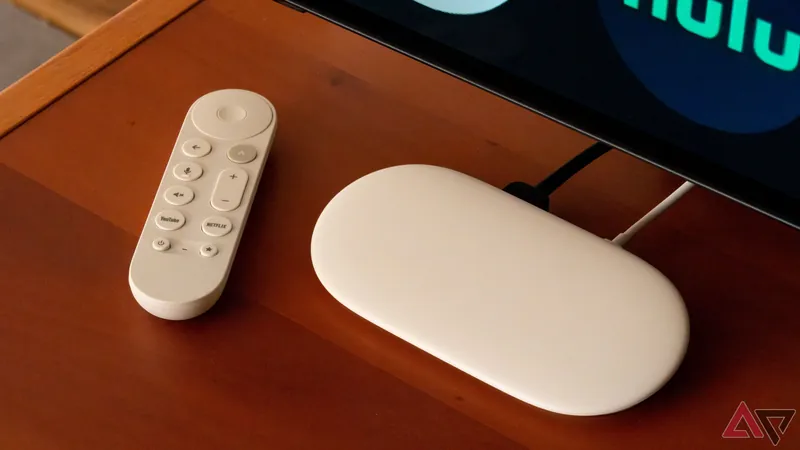
Thinking About the Google TV Streamer? Here Are 5 Crucial Limitations You Need to Know Before Purchasing!
2024-09-23
Are you ready to elevate your streaming experience? The highly anticipated Google TV Streamer is set to launch next week at a price of $100, marking its arrival as the official successor to the Chromecast. Unlike its predecessors, this set-top box captures the essence of competitors like Apple TV and Roku. Notably, it will be the first device to feature the latest Android 14 tailored for TV.
Although its introduction promises a world of entertainment at your fingertips, there are several crucial limitations to consider before making the investment. Let’s dive into the five most significant shortcomings that could impact your experience with the Google TV Streamer.
1. Limited App Compatibility: Don’t Expect a Full Android 14 Experience
While you might believe that the latest Android 14 for TV would seamlessly run all Android 14 apps, that’s not entirely accurate. Google aims to create a seamless ecosystem across its devices, but the reality is that many apps are not optimized for the Google TV remote or the TV interface. Although APK sideloading allows you to install various Android apps, the user experience might not be optimal. Check whether your essential apps are compatible with Android TV before you invest in the Google TV Streamer; disappointment could await if you hoped to enjoy every Android application without limitations.
2. Absence of Google Photos App: A Significant Miss
One glaring omission is the lack of a dedicated Google Photos app. Unlike Apple TV, which offers seamless iCloud Photos integration, users of the Google TV Streamer will have to settle for casting images from their smartphones instead. Although Google is known for its exceptional screensavers and AI-generated artwork, the absence of a photo gallery app limits your ability to showcase your memories directly on your TV.
3. Picture-in-Picture Mode Will Disappoint You: A Half-Return of Functionality
Android 14 for TV has brought back the picture-in-picture (PiP) mode, but don’t expect to use it for video streaming. While PiP allows for multitasking with apps like video calls or smart home interfaces, it will not support media apps for video playback. This could lead to frustration as the feature does not perform as users might hope, especially if they are used to robust multitasking capabilities on their Android phones.
4. Personalization and Ads Overload: Is It Too Much?
Google’s emphasis on personalization and advertisements in Android 14 for TV may feel overwhelming. Although the platform boasts advanced video discovery features and AI recommendations, users who prefer a straightforward viewing experience might find the sheer volume of personalized suggestions and ads excessive. While it may enhance the user experience for some, it could detract from the enjoyment for those who seek a more simplified interface.
5. Performance Concerns Still Linger: Is Faster Really Better?
Despite improved hardware and software aimed at enhancing performance, the Google TV Streamer still faces criticism regarding speed and efficiency. If you are shifting from a device like the Apple TV or Nvidia Shield, you may find the Google TV Streamer lagging in performance. Additionally, the lack of support for Bluetooth 5.2 means users won’t be able to enjoy simultaneous audio streaming to multiple devices, a feature readily available with competing products. This hardware shortcoming indicates that potential buyers should manage their expectations around performance.
So, should you buy the Google TV Streamer? With its exciting new features and competitive pricing, it’s tempting, but make sure you're informed about its limitations. Dive deeper into your streaming habits and preferences before making a decision! Will the Google TV Streamer meet your needs, or will these limitations steer you towards another option?
 Brasil (PT)
Brasil (PT)
 Canada (EN)
Canada (EN)
 Chile (ES)
Chile (ES)
 España (ES)
España (ES)
 France (FR)
France (FR)
 Hong Kong (EN)
Hong Kong (EN)
 Italia (IT)
Italia (IT)
 日本 (JA)
日本 (JA)
 Magyarország (HU)
Magyarország (HU)
 Norge (NO)
Norge (NO)
 Polska (PL)
Polska (PL)
 Schweiz (DE)
Schweiz (DE)
 Singapore (EN)
Singapore (EN)
 Sverige (SV)
Sverige (SV)
 Suomi (FI)
Suomi (FI)
 Türkiye (TR)
Türkiye (TR)